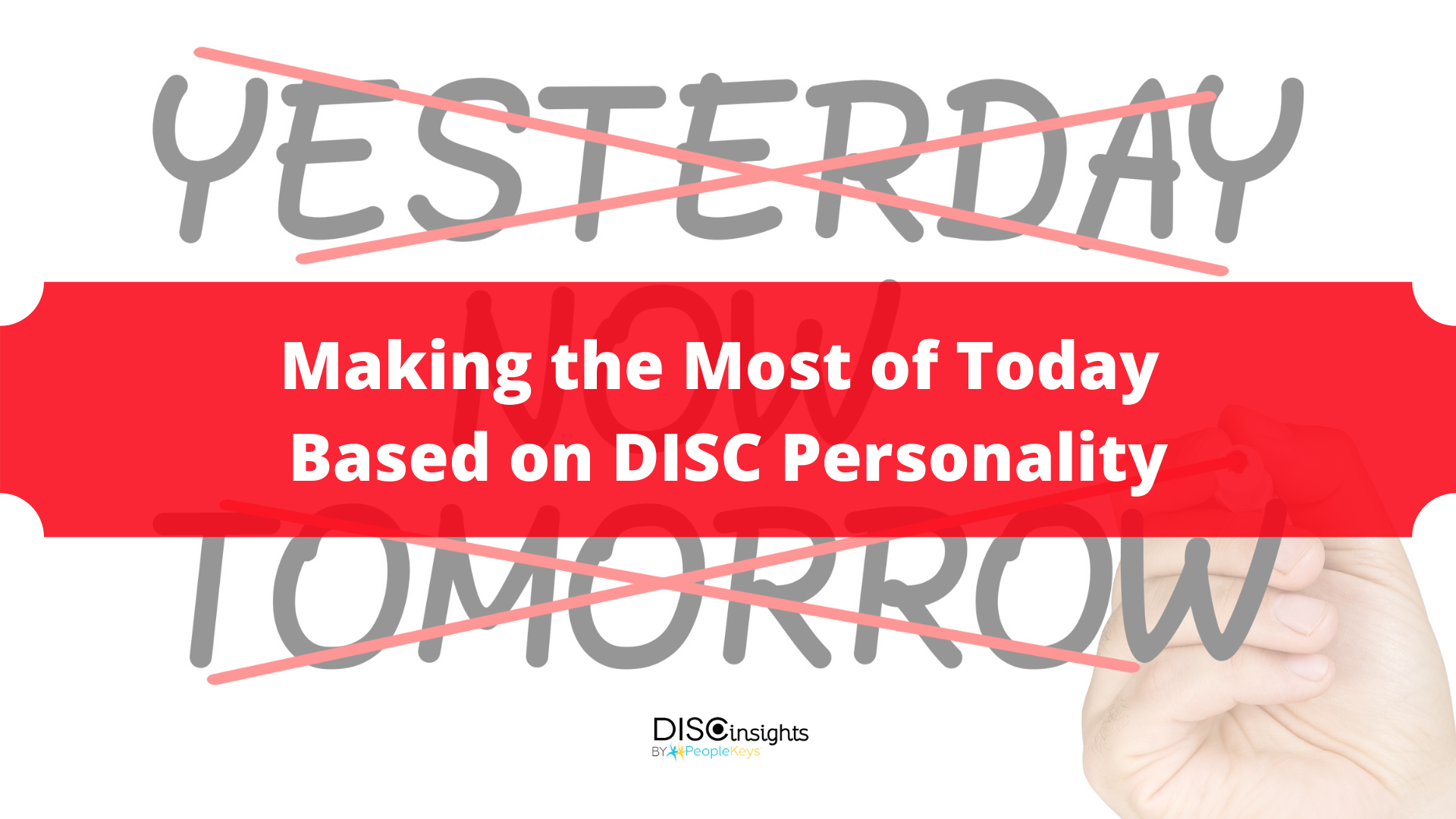- SHOP BY PRODUCT
- DISC TRAINING & CERTIFICATION TOOLS
- DISC RESOURCES
- BLOG
- SHOP BY PRODUCT
- DISC TRAINING & CERTIFICATION TOOLS
- DISC RESOURCES
- BLOG
- ALL ITEMS



If you thought you had only 24 hours left to live, what would you do? You’d most likely tell people you love them, maybe apologize to others, or tell those who will miss you the most how they’ve touched your life. You’d ask them to love again, to teach your children or grandchildren things you won’t be able to, that they’ll be okay after you are no longer here, and that time will heal the loss.
That’s all great, but why aren’t you doing that right “here and now” for those people? When you work hard all day, you need a form of stress relief. Michael, my son, is that for me. I work until 5:30 or 6:00 PM, and then I take an hour to play with Michael. I don’t take phone calls or look at my email. I simply take that time to be in the moment with him. I am never going to be able to repeat these moments while he grows up. I can’t control what’s going to happen tomorrow, so I enjoy him NOW. So, answer yourself: “What do you have right NOW, TODAY!?”
Here are some ways each DISC style can practice being more present in the “now:”
“D” style leaders are always looking for updates, so they can strategize and anticipate obstacles that might hinder progress. As visionary thinkers, they can get a bit ahead of the team, and themselves, if not careful. This can appear as though the leader is constantly preoccupied with work. Being in the “now” requires the “D” style to slow down and trust they have a team of people who are supportive and committed to success. Consider establishing clear crisis response or contingency plans in the event of an emergency, and train staff on processes and procedures. This will help reinforce the team’s ability to respond in the event leadership effectively is unavailable and give the leader peace of mind to step away from work for a bit.
“I” style leaders are known for seizing opportunities and engaging in their surroundings. As a very socially active behavioral style, “Is” tend to float around from conversation to conversation while they charge their social batteries. While this seems as a form of connecting, it can often miss the mark on meeting the needs of the individual. At some point, an “I” will need some personal affirmation and outlet to reconnect with their value and purpose. This will be a time when the “I” style seeks guidance or mentorship, or needs a close group of friends and family to lift them up. Much like the “D” style, the “I” will need to be intentional about slowing down, communicating at a more personal level, and employ active listening to connect with what is happening in the present.
“S” styles tend to sit back and observe their environment and are less likely to engage on their own unless specifically requested directly. Sometimes this can look as though the “S” style is disengaged or disinterested, even at times bored. Their passivity is misunderstood as not wanting to engage or connect; however, that could not be further from the truth. “Ss” are connectors by nature, and they are also great listeners. They are incredibly supportive, but are often hesitant to voice their opinions. For “Ss” to engage more in the “now,” consider intentionally vocalizing your thoughts and feelings more directly to the people around and closest to you. It will help them feel more connected to you in the moment, and they will understand your intention is connecting with them as well.
“C” styles may find the greatest amount of struggle in their attempts to be more present in the “now.” They’re always self-analyzing, course correcting, and looking for additional information to filter through. As a passive observer, much like the “D” style, people may view the “C” as disengaged from social interaction and preoccupied with tasks. They may be more worried about whether their final product met the criterion instead of how another person felt about receiving the information on time. “Cs” struggle with accepting status quo, and sometimes that is what’s required to be present in a moment. Accepting that ‘good enough’ is okay at times, and knowing people are more concerned about your well-being than whether you submitted a flawless report. Focus more on connecting with individuals instead of seeking validation from projects and processes.
More than ever, we’re finding appreciation for things because what we have now really can change tomorrow! None of us thought we would ever deal with a pandemic or global uncertainty. We have to live more in the “now” in every way possible. We all have areas for improvement. Take the time to identify barriers preventing you from being more present and connecting with your family, friends, and most importantly, yourself! And help others achieve their goals and live in the present by starting your own coaching practice.

© PeopleKeys. All Rights Reserved
WORKING DAYS/HOURS
Mon - Fri / 8:30AM - 5:00PM EST
